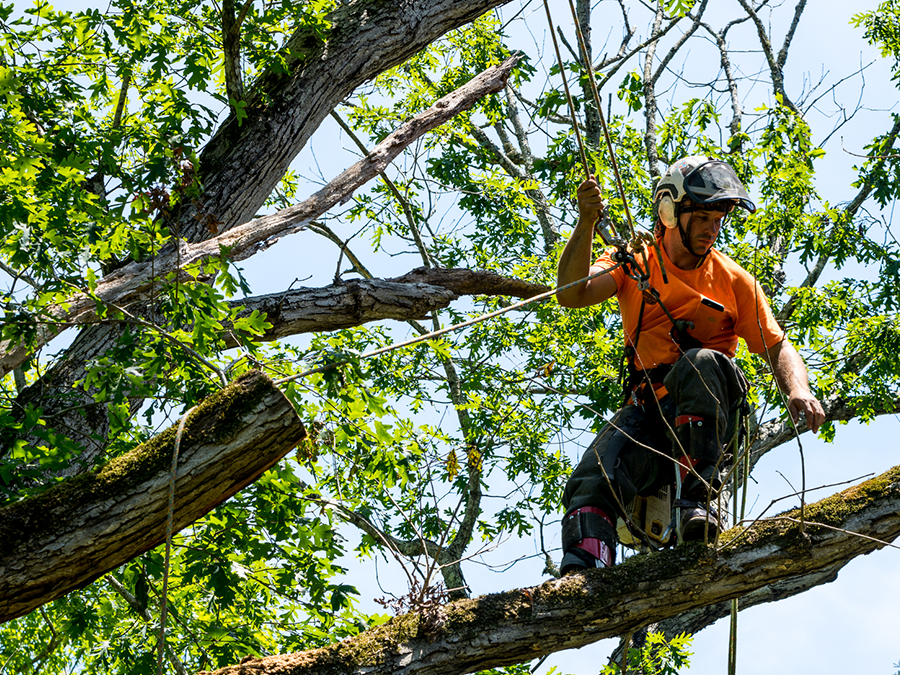As we consider maintaining the well-being and beauty of our green spaces, two fields that are frequently mentioned: tree professionals and landscapers. Though each play important roles in enhancing external areas, their skills and focus are quite distinct. Understanding these differences can help homeowners make educated decisions about tree maintenance and garden management.
Arborists are specialized tree care experts who hold an profound knowledge of tree biology, health, and upkeep. Their training prepares them to manage everything from tree pruning and disease diagnosis to safety evaluations and hazardous tree disposal. In contrast, landscapers focus on the visual elements of outdoor environments, such as cultivation, landscape design, and care of landscape features and lawns. With understanding the unique skills and services delivered by arborists, landowners can gain a greater understanding of the value of engaging a licensed expert for tree-related needs. spintax
Significance of Certified Arborists
Employing a qualified arborist is crucial for maintaining the health and safety of trees. Licensed arborists undergo extensive training and education, equipping them with the knowledge and skills necessary to examine tree conditions precisely. This knowledge empowers them to make informed decisions regarding tree care and maintenance, which can significantly impact the longevity and vitality of trees. By selecting a certified professional, homeowners and property managers can trust that their trees are in competent hands.
Furthermore, certified arborists are knowledgeable in the latest tree care techniques and best practices. This knowledge enables them to perform essential services, such as trimming, supporting, and disease management, with accuracy. Their knowledge of tree biology and ecology enables them to implement strategies that support tree health while reducing potential hazards. Nassau County Tree Removal to professional development affirms that they stay up-to-date with advancements in the field, ultimately aiding the trees they care for.
In addition to boosting tree health, certified arborists play a crucial role in promoting community safety. They are educated to detect potential risks associated with tree growth, such as structural instability or disease, that may pose threats to people and property. By proactively addressing these issues, licensed arborists can avoid accidents and costly damage. Their skills in tree risk assessments is critical for urban tree care, where trees are often located in close proximity to structures and vehicles.

Arbor Care Expertise and Solutions
Tree care professionals possess extensive expertise and training in tree care, which enables them to make informed decisions about the well-being and care of trees. Their expertise includes knowledge of tree biology, identifying diseases, and detecting the signs of stress or weaknesses. By combining this scientific foundation with practical experience, certified arborists can recommend the most effective practices for tree health, ensuring that each tree receives personalized care based on its species, surroundings, and condition.
One of the main services offered by arborists is tree pruning, which goes beyond simply trimming branches. Arborists use their knowledge of tree growth patterns and biology to perform pruning that promotes healthy development, enhances safety, and boosts aesthetics. They also conduct diagnostic assessments to diagnose issues such as pest infestations or diseases, providing solutions to address these problems efficiently. This expertise is crucial, as improper pruning or failure to care can lead to long-term damage or even tree loss.
In addition to pruning and diagnostics, arborists are key players in tree risk assessments and management strategies. They assess the structural integrity of trees, especially those near streets, buildings, or in urban environments, to avoid hazards. Their ability to identify potential risks and suggest appropriate interventions, such as cabling or bracing, contributes substantially to maintaining safe landscapes. Overall, arborists play an critical role in promoting tree health and safety, making their services invaluable for property owners and communities alike.
Contrasting Tree Care Specialists and Landscapers
Tree Care Specialists and garden designers often collaborate hand-in-hand but focus on different aspects of arboreal and garden management. Arborists excel in the maintenance and upkeep of arboreal structures, utilizing their expertise of tree biology, health, and safety. They are trained to diagnose arboreal diseases, perform trimming, and implement tree preservation techniques, ensuring that the trees are rigorous and secure for the local ecosystem. Landscapers, on the other hand, focus on the overall aesthetics and functionality of outdoor spaces, which includes cultivating floral designs, designing gardens, and maintaining lawns.
One key distinction lies in the expertise and equipment each professional employs. Arborists are equipped with specific expertise about arboreal care, using tools such as chainsaws, ropes and harnesses, and specialized trimming equipment to manage tree well-being and security. They evaluate arboreal risk, recommend remedies for ailments, and perform complex arboreal removal or cutting methods. Garden designers typically employ tools more focused on gardening and landscaping, such as shovels, lawnmowers, and nutrients. While both professions require physical labor, the emphasis and skills are markedly distinct.
Collaboration between arborists and landscapers can increase property worth and visual attractiveness. For instance, while a garden designer might create an appealing garden plan, an arborist can ensure that the arboreal structures within that design are thriving and pose no risk to structural integrity. Understanding the roles of both can lead to more effective decision-making for property maintenance and improvement, resulting in a more robust and more attractive environment.
